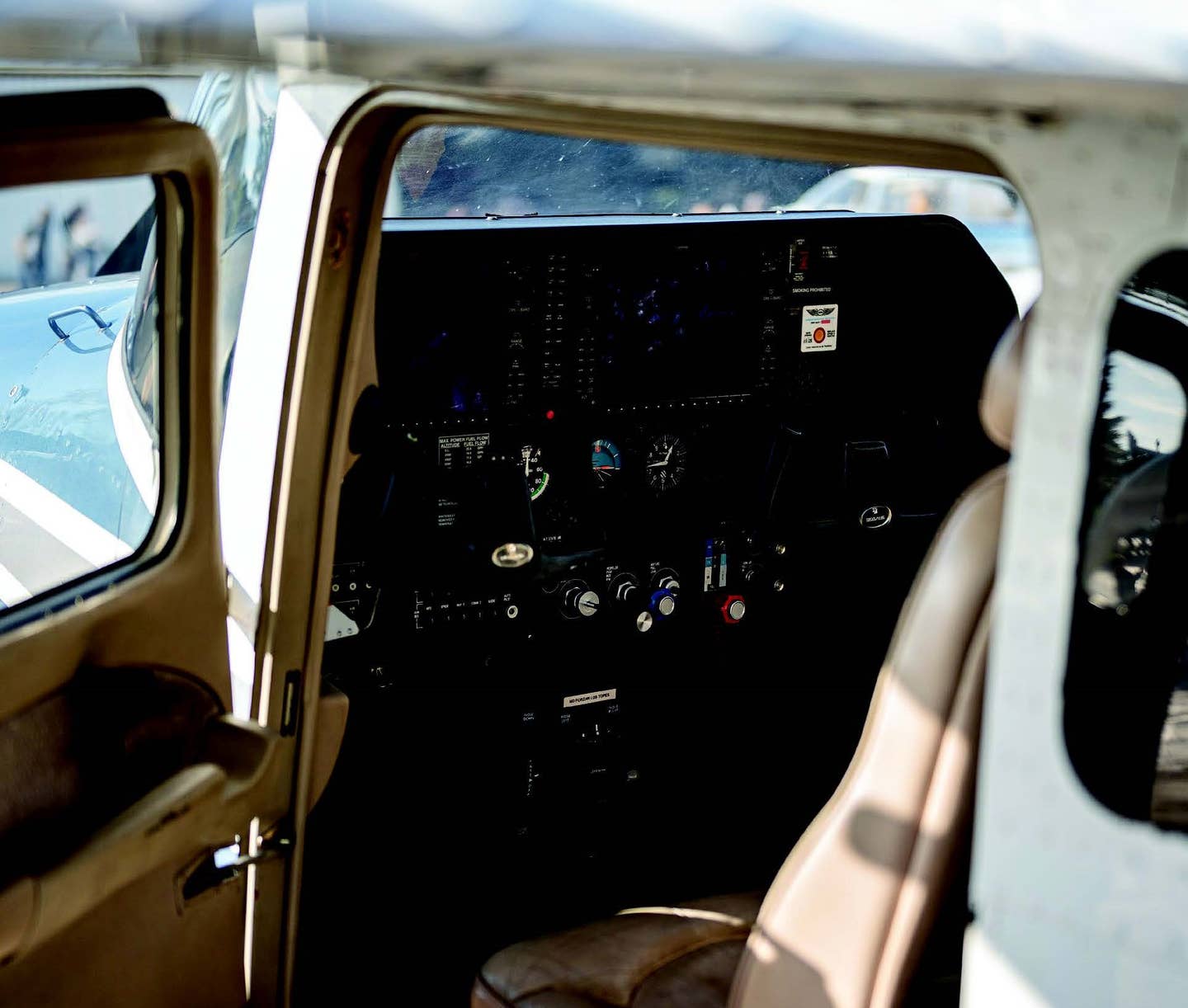Learn to Fly in ’24: Helping Your Pursuit of the Dream
‘FLYING’ offers our top 10 key elements to transforming your fantasies of flight into action.

Whether you are an active or pending pilot, or you want to learn
to fly, chances are you know someone who could use a little direction
on that path. [Adobe Stock]
You’ve picked up this issue of FLYING for a kaleidoscope of reasons. But whether you are an active or pending pilot, or you want to learn to fly, chances are you know someone who could use a little direction on that path.
For some, a good internal compass—not the literal kind but the figurative one—makes it easy for you to identify the moves to make to set you on course. For others, pursuing the dream of learning to fly may feel too abstract to turn into reality.
If you're not already a subscriber, what are you waiting for? Subscribe today to get the issue as soon as it is released in either Print or Digital formats.
Subscribe NowFirst off, what does “learn to fly” mean for you? Is it the ability to fly for yourself, with friends and family, for a business, or to own an airplane? Or is it the first stage in an aviation career?
Either way, you start with an initial pilot certification—either a light sport or private pilot certificate—as your first goal. That will give you the ability to fly a light airplane with one engine, about the same size as a car (with wings). And you can generally take a couple of people with you essentially anywhere in the United States—and abroad, in a U.S.-registered airplane.
We’ll talk about how you do that and some other ideas to consider along the way in this special section on learning to fly in this issue. It’s really up to you how far you want to take this dream.
But to kick things off, here are our top 10 key elements to transforming your fantasies of flight into action. It will be your move next.
1. Pick the Right Kind of Influence(r)
That’s a mentor, not a person you follow on Instagram. Yes, we love to follow the latest and greatest exploits of pilots (or those posing as pilots) online, on all the socials from TikTok to YouTube. And there’s some great stuff out there in the metaverse. But there’s also a lot of garbage and a lot of stupid pilot tricks posing as cool flights to try for yourself.
That’s why finding an IRL person to talk with about your pilot journey is so important. Arguably this person should not be your instructor (we’ll get to that in a sec), and often it shouldn’t be a family member. You want someone with experience as the kind of pilot you want to be—and a good sense of who you are so they can help guide you through the rough spots.
They can also help you separate the awesomeness from the “don’t-try-this-at-home” videos out there.
- READ MORE: Sporty’s Launches 2024 Learn to Fly Courses
2. Choose a Good Instruction Program
This can be a flight school, university or college program, military appointment, or local Civil Air Patrol, Commemorative Air Force hangar, or EAA chapter-led course. Think about what appeals to you, as well as what you have access to near your home base.
You may be willing to set aside a couple of years of your life and move to a different part of the country—or world—to go after ratings with a specific college or academy, if you plan to pursue an aviation career. But for most folks, the initial certificate should come close to home. That’s going to (typically) cost less money and time to achieve.
3. Identify How You Learn Best
Everyone has a style in which they absorb—and retain—information best. This will drive what instructor you pick and how you structure your personal approach to training. While you may think, “I love watching videos,” that may not ultimately be the best way for you to learn. Even for visual learners, taking in data passively allows a lot of the critical stuff to skip off the surface after you’ve hit pause.
Most people need to hear, see, and do in order to process—and for actual learning to occur. That’s why good training programs deliver the info in several ways, and then ask you to check your recall with questions or application of the material.
4. Find an Instructor Who Speaks to You
As we established in No. 3, everyone learns differently—and this has a direct bearing on whom you should choose as an instructor. While you may have that initial person chosen for you if you’re in a structured training program, you almost always have some flexibility to change instructors if there are concerns.
Here’s the big one: You need to understand what this person is trying to tell you on the ground before you get into the airplane. If you have trouble understanding them because of a language barrier, take steps to correct that. If you have other reasons that they fail to get critical information to you while flying, that’s just as big of an issue.
Make a change, if you need to. You and your CFI won’t be best friends, necessarily, but you should be able to conduct a pleasant business-style relationship with that kind of positive rapport.
- READ MORE: FLYING Launches Learn to Fly Kit
5. Take the Knowledge Test
In the process of getting your certificate, you’ll take both a knowledge exam (known as the “written,” though it is almost always conducted online) and a practical test or check ride. If you knock out the knowledge test, you assure yourself of two things—first, that you have assimilated a good portion of the information you need to master to understand what’s going on during your flight lessons, and second, you will have conquered any test anxiety that you have in order to achieve a passing score.
You can take the course online to prepare yourself, or you can work within the syllabus of your training program to achieve it. But checking this box early will tell you a lot about how you’ll do for the remainder of your training.
6. Save Up for Solo
Flight training costs money. Whether you are self-funding (read, paying your own way) or securing funds from your parents, a grant or scholarship, or other sources, you’ll need between $10,000 and $18,000 to complete an initial course, depending on where you are in the U.S. and what kind of airplane you fly.
It really hurts your training progress if you have to pause during the course because you’ve run out of money. This is especially true during the phase before your first solo flight—when a lot of concepts come together for you to master. Therefore, you need enough funds to complete about 20 hours of dual flight, so that you don’t have to pause for that reason before you solo and lose ground that will take more time to relearn.
7. Set Aside 10 Hours a Week to Learn, Minimum
Flight training extracts a time penalty as well as a cost—and you will gladly immerse yourself in the magic of flight if you can do it. But if you’re learning to fly while outside of a full-time university, college, or academy program, you will need to be honest about the time you can allocate to ground study and flights.
For most, 10 hours makes for a good minimum weekly investment. If you can’t commit this much time each week, between home study and flight/ground lessons with your instructor, hold off on the commencement of training until you can. You’ll save money and frustration in the long run.
8. Know You’ll Plateau
Everyone who has ever learned to fly has leveled off in their learning. Instructors call this a “plateau”—but it doesn’t have to feel like a brick wall. It may be your life. It may be the weather. It may be landings you just can’t get dialed. But it will happen to you.
If you know this from a logical standpoint—that something is just going to take your brain longer to integrate, for whatever reason—you’re less inclined to feel frustrated or discouraged when it happens. You can address it by taking a weekend off, flying with another instructor, or just going up for fun.
Sure, it will still get you down. But even Bob Hoover had his bad days.
9. Prep for the Check Ride
There are a wide range of practical test preparation guides that will help you understand all you need to know in order to pass the check ride when the time comes. Having command of the material will help you combat any nervousness you feel on the big day.
But what other important elements are there to consider? You need to eat (a light meal) and drink (water is best) and rest well. In the days leading up to the test, you may toss and turn a bit the night before, but that won’t stymie you if you’ve gone into the home stretch with gas in your tank. Also, make sure you take at least one practice exam with another CFI. They will help find any weak spots and give you more confidence that it isn’t just luck propelling you forward.
10. Make Your Next Dream Come True
Once the check ride is over, don’t let your dream end there. Leave yourself one wish unfulfilled, so that you have something to strive for. It may be buying an airplane, working toward taking your family on a vacation flying, or pursuing an instrument rating. We’ll give you all the ideas you need in the pages of FLYING—so keep those issues coming too.
This feature first appeared in the March 2024/Issue 946 of FLYING’s print edition.

Subscribe to Our Newsletter
Get the latest FLYING stories delivered directly to your inbox







